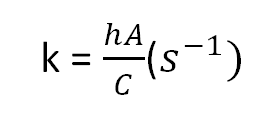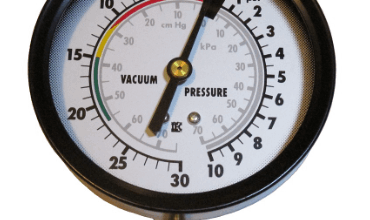Newton’s Law of Cooling Calculator
Newton’s law of cooling is a very useful formulation that we can use for objects that are left inside an ambient temperature. And you can easily calculate the final temperature of the object in specific time periods and other parameters. You can use this Newton’s law of cooling calculator to find the final temperatures of the objects.
The use of the calculator is very simple You need to enter the required values inside the brackets to find the final temperature of the object. These parameters are like this;
- TInitial: The initial temperature of the object in Kelvin scale.
- Tamb: The ambient temperature of the object.
- k: It is the cooling coefficient of the heat transfer mechanism. You can find how to calculate it below. The unit of it is s^-1.
- t: Total time passed during the heat transfer in seconds.
Calculating the Cooling Coefficient
Also, the calculation of the cooling coefficient is very simple. You need to use the equation below to calculate it;

In this equation;
- h: Heat transfer coefficient. W/(m2K) is the unit.
- A: The heat exchange area occurs between the object and the environment. The unit is m2.
- C: Heat capacity of the object which has a unit of J/K.
If you put these values inside the equation, you can easily calculate the cooling coefficient.
How to Calculate the Newton’s Law of Cooling Formula?
The general formulation of Newton’s law of cooling is like this. We use this formula in Newton’s law of cooling calculator.

Actually, it is a fundamental formula that we can easily understand the cooling parameters. If you take a look at this formula, you can easily understand that;
- With the increasing ambient temperature, the final temperature increases.
- If the cooling coefficient increases, the final temperature decreases. The same thing is valid with time.
- Also if the initial temperature is high, the final temperature will be closer to the ambient temperature.
Where Do We Use Newton’s Law of Cooling Calculator?
There are different uses for this calculation. You can easily calculate the final temperature of an object inside an atmosphere. And we are considering both convection and conduction for this cooling application.
- HVAC is one of the best applications that we are using for this calculation. Many HVAC engineers use these kinds of heat transfer calculations to calculate general engineering systems. So, this calculator will be handy for them.
- Also, kitchenware and oven manufacturers are using these calculations because heating and baking different kinds of meals depend on the heat transfer between these objects and the environment.
- Also, they are widespread in aerospace and automotive heat exchange applications. Most of engineers and designers use Newton’s law of cooling calculator to calculate the final temperatures of different objects.
Conclusion
As you see above, the calculation of the final temperature of the objects is very simple with Newton’s law of cooling calculator. If you have additional comments and questions about this calculator, please leave them below.
Also, you can find other useful calculators available on fmechanic.com!
Gph to Gpm Conversion Calculator – Simple Use
Lb to kN Conversion Calculator – Easy Calculation




